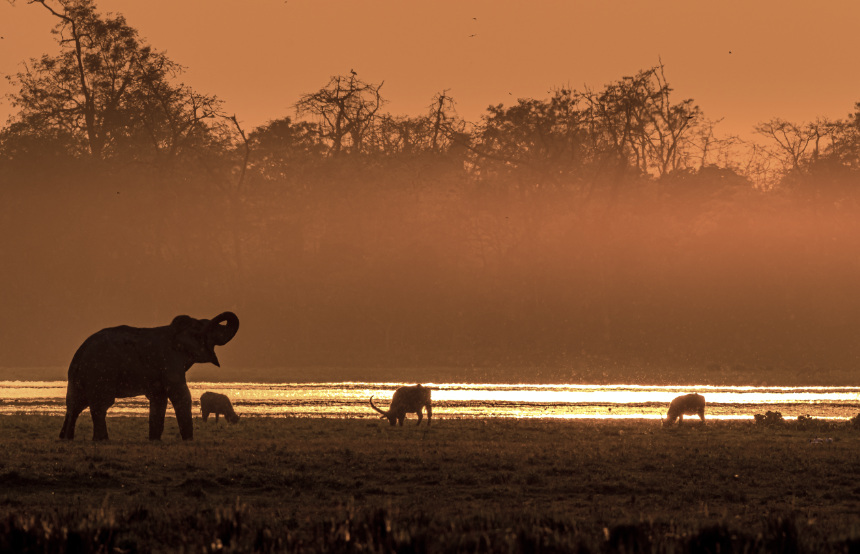Dotted evenly across the country, like pins strategically placed on a map, India’s UNESCO Sites document the country’s colourful cultural history. With the aim of protecting and preserving these sites of ‘outstanding value to humanity’, UNESCO (the United Nations Educational, Scientific and Cultural Organisation) ensures that they can continue to tell the story of this extraordinary nation, from both a historic and natural perspective. Any would be worthy of a place within your itinerary, yet with a total of 40 (and counting) across the country, you would be hard-pressed to cram them all into one trip. To steer you in the right direction on your journey of cultural discovery, here are our favourite UNESCO Sites in India…
- Taj Mahal, Agra
- Ajanta Caves, Maharashtra
- Hampi, Karnataka
- Jaipur, Rajasthan
- Kaziranga National Park, Assam
Taj Mahal, Agra
Rising from the banks of the Yamuna River, in the Agra District of Uttar Pradesh, is the Taj Mahal (and it would be impossible to compile a list of UNESCO Sites in India without including this iconic building). Considered to be one of the country’s greatest architectural achievements, Mughal Emperor Shah Jahan ordered its construction in memory of his wife, Mumtaz Mahal, in 1631 AD. After years of painstaking carving by skilled craftspeople of the Mughal empire, the mausoleum was finally completed in 1648 AD. Fashioned from brick-in-lime veneered with red sandstone and marble, and inlayed with semi-precious stones, the workmanship is astonishing in its near perfect symmetry. As the single most famous sight on the Indian subcontinent, images of the Taj Mahal are ubiquitous, yet there’s no substitute for experiencing it in person and tourists numbering more than twice the population of Agra visit annually. The Taj Mahal is in good company, with the city’s Agra Fort and palace complex of Fatehpur Sikri also gracing UNESCO’s World Heritage list, forming a tempting trifecta of top-tier sites.
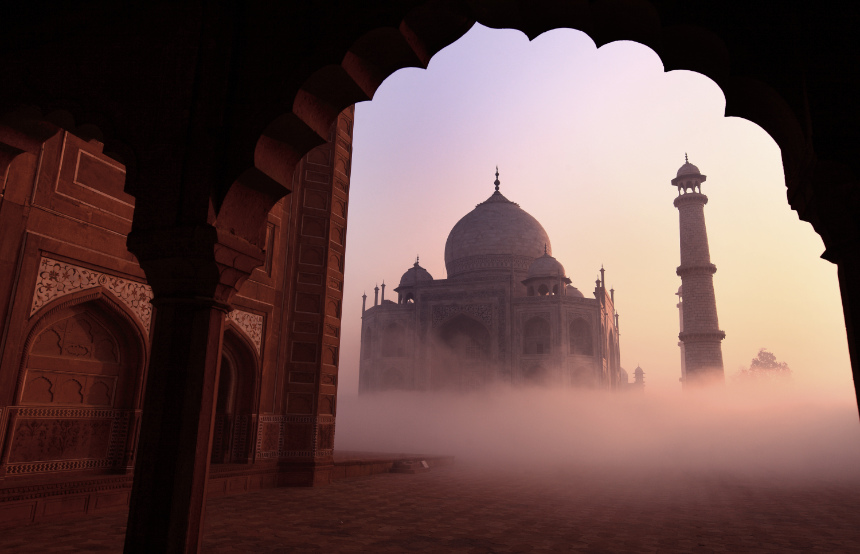
Ajanta Caves, Maharashtra
Renowned as masterpieces of Buddhist religious art, dating back as early as the second century BC, the richly adorned Ajanta Caves are carved into the steep cliff face of a horseshoe-shaped gorge adjacent to the Waghore River. The caves were discovered by ‘accident’ in 1819 by a British cavalry officer while on a tiger hunt and are thought to have once been a sanctuary for Buddhist monks, with 30 spellbinding Buddhist prayer halls and monasteries. Their interiors are decorated with colourful murals and subsequent artists have aimed to replicate the ornate frescoes to decipher their meaning and document their likeness. Divided into two main series of caves, only a selection of the caves is open to visitors and accessed via a steep uphill climb.
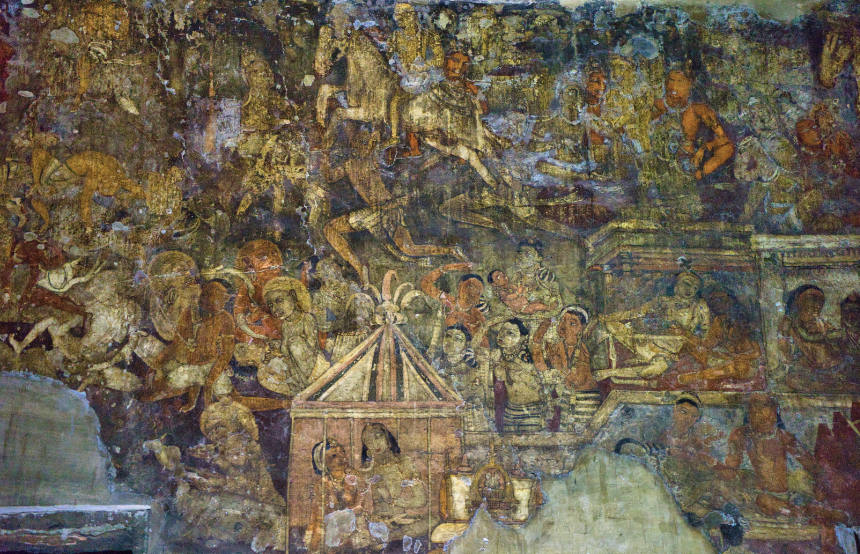
Hampi, Karnataka
Another of India’s timeless treasures, Hampi is an ancient village that served as the capital of the Vijayanagar Empire around 1,500 AD. Reduced to ruins by the army of the Sultanates, who ransacked the town over a period of six months, the site is now strewn with remnants of a once-powerful kingdom. Crumbling temple complexes, archaic forts and Dravidian-style architecture dot the otherworldly landscape, while the nearby Hampi Bazaar has since been revived and acts as a market for all manner of weird and wonderful knick-knacks.
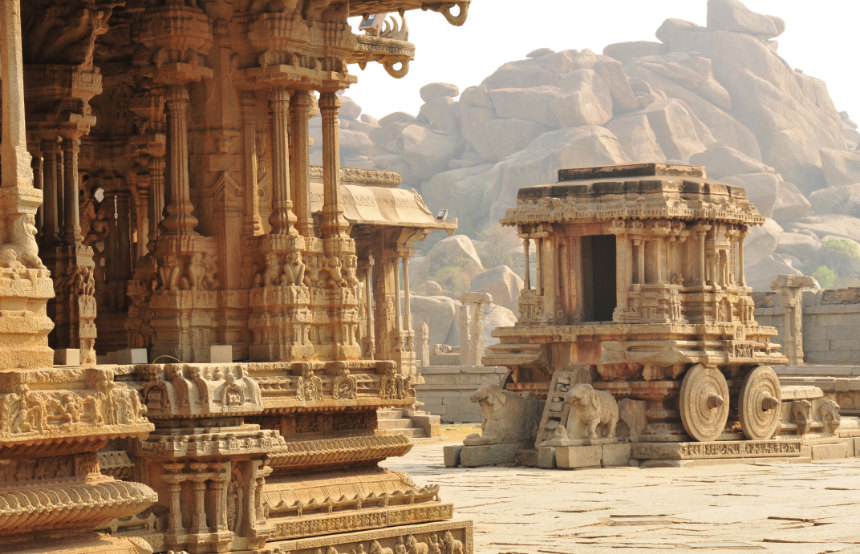
Jaipur, Rajasthan
If you thought that India’s lengthy compilation of UNESCO Sites couldn’t get any more impressive, enter Jaipur, a whole city inscribed into the list in recognition of its rose-tinted Vedic architecture and grid-like street plan. This majestic appearance has earned it multiple monikers, including the ‘Pink City’, the ‘Island of Glory’ and the ‘Paris of India’. Whichever name you choose to adopt, Jaipur remains the lively gateway to the Rajasthan state, where time-worn forts and ostentatious palaces are accompanied by a symphony of buzzing rickshaws and bustling bazaars. Visit Jaipur during Holi for a heightened experience of sensory immersion, as the Festival of Colours transforms the ‘Pink City’ into an even more vibrant iteration, complete with curtains of flowers and a smorgasbord of food.
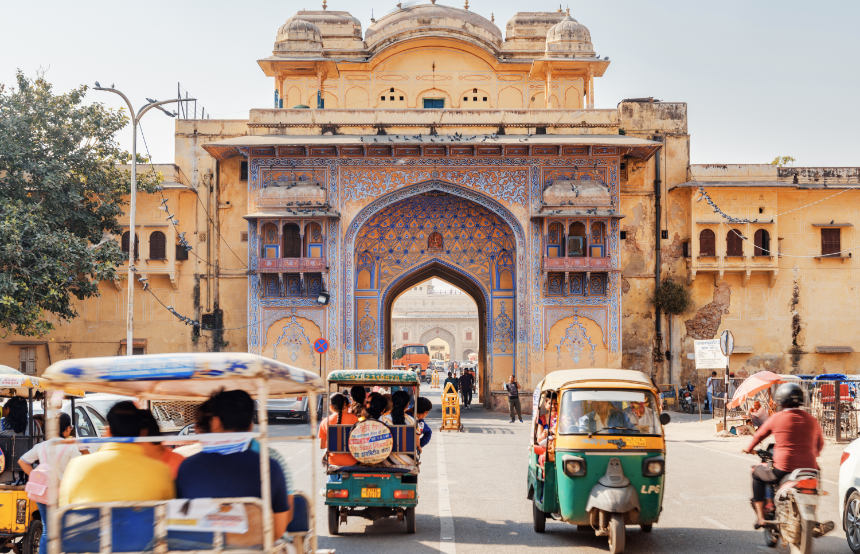
Kaziranga National Park, Assam
One of seven natural UNESCO Sites in India, Kaziranga National Park is a protected patchwork of forest, wetland and grassland in the north-eastern state of Assam. UNESCO describes the site as one of the last regions in eastern India untouched by a human presence, and consequently the park plays host to the planet’s largest population of Indian one-horned rhinoceroses, as well as tigers (it was declared a Tiger Reserve in 2006), elephants, panthers, bears and Ganges River dolphins. Added to the World Heritage list in 1985, UNESCO praises the park’s success at saving the rare breed of one-horned rhinoceroses from the brink of extinction at the beginning of the 20th century.
Written by Luisa Watts
